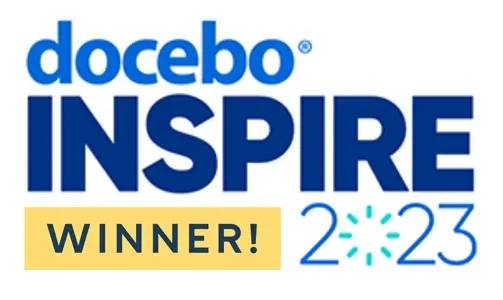What used to be considered “technology of the future”, generative AI is now here, and its powers are being harnessed across a variety of industries. But before we all start using this game-changing technology, we need to think about the ethics behind using generative AI. Topics like privacy, fairness, transparency, and misinformation are crucial to consider to make sure AI is being used responsibly today and into the future. Let’s dive deeper.
6 Ethical Considerations When Using Generative Ai
1. Misinformation & Deep Fakes
Generative AI has brought us some incredible advances, but it also presents challenges like misinformation and deepfakes.
- Misinformation is when incorrect information spreads, often by mistake.
- Deep Fakes are more deliberate spreads of misinformation — they use AI to create fake videos or audio that look and sound real. These can be especially misleading because they seem so believable.
Generative AI systems – like ChatGPT for example – learn from huge amounts of data, then use that learning to create new, very realistic content. This is how they can make something false appear true.
There’s currently no way to stop the spread of misinformation and deep fakes, but by consistently questioning the authenticity of the AI-generated content, we can better navigate the pitfalls. This awareness helps us prevent the spread of false information and protect ourselves against deception.
2. Data Privacy
Generative AI systems often require a lot of data to learn, and sometimes this includes sensitive personal details. Generative models that use personal data can create privacy risks, such as unauthorised use of this data or creating very accurate synthetic profiles that might be mistaken for real people.
- For example, imagine an AI trained with personal medical histories accidentally creating a profile that looks a lot like a real patient. This could lead to serious privacy issues and even legal problems, like violations of health privacy laws.
To prevent these issues, it's important to anonymise data when training AI models, which means removing any details that could identify someone (especially in legal and medical industries). It's also a good idea to follow data protection rules, like the GDPR’s principle of data minimisation, which advises using only the data necessary for a specific purpose. Companies should remove any unnecessary personal data before training AI systems and use strong encryption to protect the data they keep.
3. Bias and Fairness
When you use generative AI in your business, it’s important to consider bias and fairness. Basically, an AI tool holds up a mirror to the data it’s trained on. What this means is if the data shows any unfair biases—like preferring one group of people over another—then the AI might unintentionally do the same. This can lead to decisions that aren't just unfair but can also harm your business's reputation and effectiveness.
To ensure that your AI systems treat everyone fairly, here are a couple of steps you can take:
- Diversify the Training Data: Make sure the data you use to train your AI represents a wide variety of people and situations. The more diverse the data, the less likely the AI will develop biassed behaviours.
- Regularly Test for Bias: Just as you'd regularly check machinery or software for issues, you should routinely test your AI systems to identify any biases. This means looking at how the AI performs across different groups to ensure no one is unfairly treated.
- Seek External Audits: Sometimes, it helps to have an extra set of eyes look things over. Bringing in external experts to review your AI systems can uncover biases you might have missed. Plus, it shows your commitment to fairness.
4. Who Fixes Mistakes? (Accountability)
When using generative AI in your business, it's important to plan for the possibility that the AI might make a mistake. Like any tool or technology, AI isn't perfect and can sometimes get things wrong. This might be anything from misinterpreting data to producing inaccurate or inappropriate content.
So, who is responsible when something goes wrong? The answer isn't always straightforward, but here are some key points to consider:
- Creators of the AI: The teams or individuals who develop and train the AI systems typically have a significant responsibility. They need to ensure the technology is built and maintained correctly and that it operates safely. This includes using high-quality data and testing the AI thoroughly before it goes live.
- Users of the AI: Businesses that deploy AI technology also share in the responsibility. It's important to understand the capabilities and limitations of the AI you're using. Proper training for staff and setting up appropriate oversight mechanisms can help catch errors before they cause problems.
To prevent any issues when using generative AI, it’s important to manage accountability effectively:
- Establish protocols for identifying and correcting errors. This includes monitoring the AI's outputs and having a clear process for addressing any issues.
- If a mistake affects customers or the public, communicate openly about what happened and what is being done to fix it. This transparency can help maintain trust.
- Use mistakes as learning opportunities. Analysing why an error occurred can help improve the AI system and prevent similar issues in the future.
By setting up these accountability measures, your business can respond effectively when AI errors occur, ensuring that you maintain trust and operate responsibly.
5. AI at Work (Impact on Employment)
Generative AI is transforming the workplace in many ways, both by changing existing jobs and creating new ones.
Automating Jobs
Generative AI can automate tasks that were previously done manually, such as data entry, content creation, and even some aspects of customer service. This means that some jobs might become less necessary or evolve to focus on other skills. For example, a job that once required a lot of writing might shift towards editing and refining AI-generated content instead.
Creating New Jobs
At the same time, generative AI creates opportunities for new kinds of jobs. These include roles in AI management, training, oversight, and maintenance. As AI becomes more prevalent, the demand for specialists who can develop, implement, and monitor these systems is likely to grow.
Balancing Generative AI Without Harming Human Employment
Using AI can help businesses save money by reducing the need for labour in certain tasks, but this efficiency must be balanced with the potential impact on employment. It's important for companies to consider how they can use AI to not only cut costs but also enhance employee skills and create new opportunities. For example, training programs can help current employees transition into more AI-focused roles, turning potential job losses into new career paths.
6. Are AI Works Truly Original? Copyright Issues
As generative AI makes its mark in the arts and storytelling, it sparks interesting questions about what it means to be original and who really "owns" a piece of AI-created work.
AI in Creative Processes
AI is essentially a student learning from countless books, paintings, and songs. It takes in all these creative works, picks up various styles and techniques, and then tries its hand at creating something new. Whether it’s spinning up a fresh story or painting a unique landscape, the AI uses what it's learned to make something that feels new but is deeply influenced by its "lessons."
Originality of AI Creations
The big question is: Are these AI-generated pieces truly original? They don’t spring from a human's personal experiences or emotions, but from algorithms processing a mix of influences and patterns they’ve been taught. This blurs the lines of creativity. Is the AI creating something genuinely new, or is it more like a remix of its training data?
Ownership and Copyright
There’s also the question of who owns what the AI makes? Is it the developers who designed the AI? The artists whose works were used to teach it? Or does the AI itself hold some claim over its creations? These aren’t easy questions, and the answers could reshape how we think about creativity and property rights in the digital age.
There’s no one right answer, but it’s clear that generative AI is pushing us to rethink these boundaries and responsibilities, making it an exciting yet complex frontier in the creative world. It’s about more than just who presses the "create" button; it’s about understanding the value and origin of creativity itself.
Dive Deeper into AI with Online Courses Australia
Are you interested in working in the field of AI, cyber security, or software development? Start your adventure with Online Courses Australia. We have a variety of AI courses to match your interests and career goals.
From AI basics to advanced cybersecurity, our courses are designed to give you a solid foundation in these emerging fields. Whether you're looking to quickly start a new career with short courses or want to dig deep into complex topics, we have something for everyone.
Our courses are flexible and accessible, making it easy to find the perfect fit for your ambitions. Start your journey today and discover the possibilities.
Explore AI, Cyber & Software Online Courses
Read more:
- Career Development





















